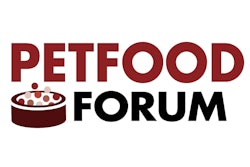This publication combines Packaged Facts’ report on Pet Food in the U.S., 15th Edition (July 2020) with a supplemental report on Pet Food Consumer Trends (June 2020).
The U.S. pet food market got a wholly unexpected assist from the novel coronavirus pandemic, with sales projected to grow even faster in 2020 than was expected pre-pandemic. As the stay-at-home orders and resulting threats to supply chains and brick-and-mortar retailer operations posed serious challenges to the market, pet food marketers and retailers alike worked to ensure that pet owners were able to stock up on the pet foods that their furry companions required, migrating rapidly online and adopting “contactless” brick-and-mortar shopping strategies including curbside pickup. Just as the pet food industry stood out as famously recession resistant through 9/11 and the Great Recession of 2008, it has proven to be a bright spot in the new world of COVID-19, getting an additional boost from a surge in pet adoptions and fostering among pet parents stuck at home.
Although the pandemic is far from over, and its economic fallout is likely to linger for many months if not years, the pet food market is expected to maintain strong growth, bolstered by the infusion of new pets and U.S. pet owners’ willingness to spend on their beloved “fur babies” even in the midst of a health and economic crisis. With 2019 sales approaching $29 billion, sales of dog and cat food are expected to reach nearly $38 billion by 2024, with e-commerce surging to become the No. 1 retail channel. Featuring updated sales projections and analysis of the major trends impacting the market now and into the foreseeable future, this completely revised 15th edition of Packaged Facts’ Pet Foods in the U.S. focuses on both the short- and long-terms impacts of the coronavirus crisis, including the opportunities therein.
Providing separate sales tracking and projections for dog and cat food, the report also examines trends by form (dry, wet, semi-moist, and frozen/refrigerated), ingredients, and product claims across the full retail spectrum including online retailers, mass-market outlets, the pet specialty channel, and other channels. It provides a comprehensive overview covering historical market size and projections (2015-2024); cross-market trends; consumer expenditures; market opportunities; mergers and acquisitions; channel trends including e-commerce and omnichannel; and new product and marketing trends—all presented through the lens of the changes brought on by the pandemic.
Scope and Methodology
Pet Food in the U.S., 15th Edition analyzes the retail market for pet food in the United States. The full retail spectrum is quantified, including mass-market outlets, pet specialty stores (chains and independents), and other channels including the Internet. The report divides the market into two categories:
- Dog Food, subdivided into four forms: Dry, Wet (aka “Canned”), Frozen/Refrigerated, and Semi-moist.
- Cat Food, also subdivided into four forms: Dry, Wet (aka “Canned”), Frozen/Refrigerated, and Semi-moist.
This report also examines meal toppers and other pet food add-ins to provide market perspective and track overall trends in pet food.
Though discussed in context of the market as a whole, pet food sold through the veterinary channel and non-medical petcare service providers is excluded from the market sizing estimates, and rather included in the market sizing for those channels as presented in Packaged Facts’ annual U.S. Pet Market Outlook reports.
The information contained in the report was obtained from primary and secondary research. Primary research includes national online consumer polls of U.S. adult pet owners (age 18+) conducted on an ongoing basis by Packaged Facts, to measure purchasing patterns and attitudes regarding pet products and services. With sample sizes of approximately 1,000 pet owners, these surveys are based on national online research panels that are census representative on the primary demographic measures of age, gender, geographic region, race/ethnicity, and household income. The main surveys used in this report were conducted between February 2020 and May 2020.
Our primary research also includes interviews with pet market experts; participation in pet industry events including the American Pet Products Association’s Global Pet Expos (2004-2020) and Petfood Industry/Watt Publishing’s Petfood Forums (2004-2019); on-site examination of retail and service provider venues; and Internet canvassing, including blogs.
Secondary research includes information- and data-gathering from consumer business and trade publications including Pet Age, Pet Business, Pet Product News International, and Petfood Industry; company profiles in trade and consumer publications; and information culled from Packaged Facts’ extensive pet market research database and report collection.
Our estimates of market size and company performance are based on reported revenues of pet product manufacturers, retailers, and pet services providers; background sales data from sources such as IRI and Nielsen; surveys of independent and chain pet store retailers; government data including U.S. Bureau of Labor Statistics Consumer Expenditure Surveys; and figures from other market research sources.












